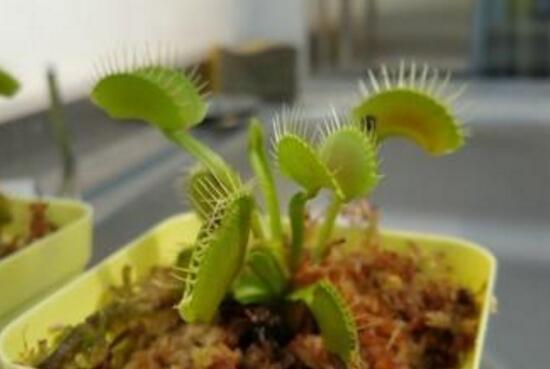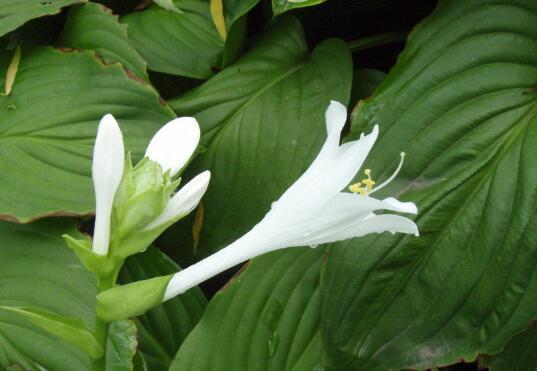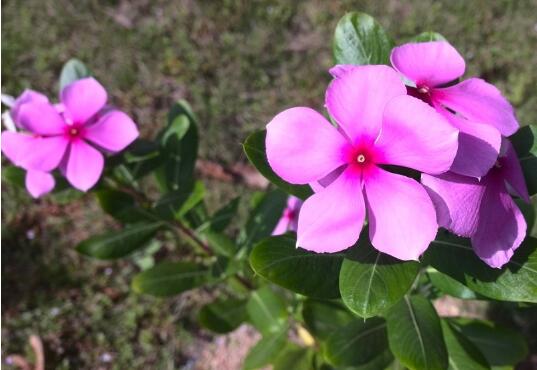How to reproduce flytrap, how to reproduce flytrap (leaf insertion / ramet / sowing)
As a mosquito repellent plant, keeping flytrap indoors can not only eliminate flies in the home, but also purify the air, so every summer, it will become the object of pursuit. With the increasing demand for flytrap, its mass reproduction is imperative, so how to reproduce flytrap? The following are three breeding methods of flycatcher, follow the editor to learn about it.
First, how to reproduce flytrap, cut leaves / ramets / sow seeds

As a green plant that can be raised indoors, the reproduction method of flytrap is no different from other plants. It is mainly divided into sexual reproduction and asexual reproduction. Asexual reproduction is divided into leaf insertion method, split plant method and flower bud method; sexual reproduction is sowing method, specific how to do, the editor will tell you in detail.
(1) asexual reproduction of flytrap.
1. Leaf insertion method
Leaf insertion is one of the most common breeding methods of flycatcher, which is dug out of the soil from late spring to early summer when it is growing vigorously. After that, you can see the white petal petiole of the flytrap and peel it off with the clip and the base of the petiole.
Then insert the "leaf" obliquely on the top and clean substrate of the water moss, maintain high humidity and give enough light, and after two months or so, it will be able to grow new buds. Finally, the leaves can grow new plants.
2. Split-plant method
Ramet is also one of the important propagation methods of flycatch. when flytrap grows lateral buds, as long as they are big enough to have complete roots, take them off, then insert them directly into a new flowerpot, pour enough water, and put them in a cool place to slow bacteria. After twenty days or so, the lateral buds will take root and a new flytrap will appear.
3. Flower bud method
This is a low operational, low survival rate of the reproduction method, the use of temperature difference, the flytrap flower bud into a plant! Method: if there is a great temperature difference between day and night, the flower bud of the flytrap will be induced to transform into a new plant. At this time, the small plant can be cut off and planted in the soil, and it will be a new flytrap.
(2) sexual reproduction of flytrap.
4. Sowing method
The flytrap will bear fruit after flowering, so it can also be propagated by seeds. However, the seeds of the flytrap are preserved for a short time, so it is best to buy those that have been collected for no more than three months in the same year. Note that before planting, soak the seeds in soft water for about 48 hours, which can improve the germination rate.
It is best to use water moss in the sowing substrate. If it is dry, it can be soaked in water first. Then sow the seeds directly on the surface of the clean substrate, making sure to maintain high humidity. If the north is relatively dry, you can directly use the pot soaking method to plant, generally about 1 month germination. Soon after, the cotyledons of the flytrap also appeared.
Generally speaking, leaf cuttings, ramets, flower buds and sowing can be used for flytrap reproduction, but leaf cuttings are the most suitable for the majority of flower friends. So flower friends who want to make more than one pot of flytrap at home, try it yourself as soon as possible. Even beginners are very likely to succeed. About the breeding method of flytrap, this is the editor's introduction. I hope I can help you.
How does the flytrap reproduce, sow and plant leaves?
How to reproduce flytrap, generally can use sowing, leaf insertion, ramet, three kinds of reproduction methods can be used, flower friends can choose the appropriate way of reproduction according to their own conditions, the following respectively sort out the methods of sowing, splitting and leaf insertion.
How to reproduce flycatcher 1. Methods of sowing and propagation
The seeds of flytrap should be sowed as soon as possible after harvest. The longer the time is, the lower the germination rate will be, and the preservation time is no more than 12 months. Sowing can be directly sprinkled on a clean substrate surface (mixed peat or pure water moss can be used), the surface is not covered with soil or covered with 1-3 mm high fine peat or fine-grained red jade soil to help fix the root system, maintain high humidity and bright light, the temperature is maintained at 15-30 degrees, germinate in a month or so, and it takes 3-5 years to grow up.
2. The method of leaf cutting propagation.
Peel the whole leaf from the mother plant, insert it obliquely or horizontally on a clean substrate such as water moss, maintain high humidity and bright light, and sprout in about 2 months.
3. The method of ramet propagation.
Flytraps often grow lateral buds, and when they grow big enough, the ramet bulbs will naturally separate from the mother plant, which can be dug up and planted separately or separately when changing pots.
Propagation methods of flytrap
Sexual reproduction of flytrap
Flycatcher belongs to seed plants, which can be propagated by seeds or self-pollinated. But most artificial pollination will bear fruit. However, if the timing of pollination is wrong, the artificial pollination of the flytrap will not be successful.
The flowers of the flytrap do not mature at the same time. Often the stamens mature first and the pistils mature later. So it's no use pollinating it at this time. Because the pistil of the flytrap usually matures one day later than the stamen, the correct time for pollination should be the day after flowering.
If pollination is successful, the flower will wither within 1-2 days, and the ovary (the base of the pistil) begins to expand, and the fruit will mature after a few weeks.
A fruit of the flytrap usually has more than a dozen seeds, black and droplet-shaped.
The number of seeds has something to do with the health and size of the plant itself. Robust plants usually produce a little more seeds.
Because the seeds of flytrap are less resistant to preservation, they should be sown as soon as possible after harvest.
If you want to plant a larger flytrap, do not often let it blossom, because flowering is very nutrient-consuming. It can be cut off as soon as possible when the flower stem is extracted.
Asexual reproduction of flytrap
Leaf insertion method
It is a common breeding method of flycatcher, in which a petiole is inserted into the soil and a new plant can grow.
In late spring to early summer, when the flytrap is growing vigorously, after the flytrap is dug out of the soil, we can see its white petaloid petiole buried in the soil. Attach the traps of the flytrap to the petioles, peel them off together with the base of the white petioles, put them on the cultivation medium, maintain high humidity and give enough light, and new buds will emerge after a few weeks.
Split-plant method
When the flytrap grows lateral buds, as long as it is large enough to have complete roots, it can be planted separately from its mother plant.
Flower bud method
Sometimes because of the temperature difference, the flower bud of the flytrap will turn into a plant!
If there is a great temperature difference between day and night, the flower bud of the flytrap will be induced to transform into a new plant. At this time, the small plant can be cut off and planted in the soil, and it will be a new flytrap.
- Prev

How to sow and reproduce the hairpin flower? the sowing method / spring sowing rate is high.
Among the propagation methods of hairpin flowers, sowing and reproduction is a more commonly used way, but if you want to reproduce successfully, then the method is very important. About how to sow and reproduce, let's take you to know about it.
- Next

What about the growing insects of Catharanthus roseus? pest control of Catharanthus roseus / 2 insect pests and 3 diseases
In the process of Catharanthus roseus culture, the last thing people want to encounter is the problem of diseases and insect pests. When this problem occurs, it must be dealt with as soon as possible. If the prolongation of time will directly lead to the death of Catharanthus roseus, what about the Catharanthus roseus worms? How to control diseases and insect pests of Catharanthus roseus
Related
- Fuxing push coffee new agricultural production and marketing class: lack of small-scale processing plants
- Jujube rice field leisure farm deep ploughing Yilan for five years to create a space for organic food and play
- Nongyu Farm-A trial of organic papaya for brave women with advanced technology
- Four points for attention in the prevention and control of diseases and insect pests of edible fungi
- How to add nutrient solution to Edible Fungi
- Is there any good way to control edible fungus mites?
- Open Inoculation Technology of Edible Fungi
- Is there any clever way to use fertilizer for edible fungus in winter?
- What agents are used to kill the pathogens of edible fungi in the mushroom shed?
- Rapid drying of Edible Fungi

